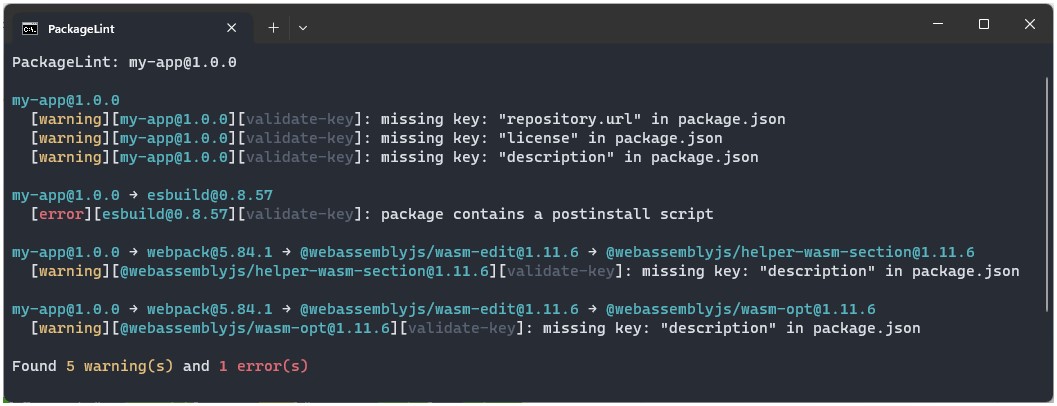Lint

Introduction
The lint option lets you define and run checks on the dependency tree.
If an error is encountered the lint process will exit with a non 0 status code.
Config File
The checks are defined in a javascript file that needs to be passed to the lint command.
A sample config file could look like this:
lintConfig.js
module.exports = {
rules: [
// checks go here
[
"warning", // warning | error
{
name: `sample-check`,
check: pkg => {
const description = pkg.getData("description");
if (!description) return `No description found!`;
}
}
]
]
};
This will surface all dependencies that don't contain a description as warning;
For a more in depth explanation on how to write checks please see this guide.
Options
| Argument | Description |
|---|---|
--package | package to run the checks on, defaults to latest version if no version is provided |
--folder | path to folder that contains a local packagejson |
--depth | depth to evaluate, if ommitted will traverse the whole dependency tree |
$path/to/config.js | path to the config file that contains the checks |
Example Usages
Lint whole dependency tree of latest React version
pkga lint --package react ./path/to/config.js
Lint React only with specific version
pkga lint --package react@16.10.2 --depth 0 ./path/to/config.js
Lint local project
pkga lint --folder ./path/to/project ./path/to/config.js
Rules
Currently there's only 1 built in rule, namely the Validate Key rule. This rule allows you to check for the existence of certain keys in the package.json. Additionally a custom validator can be also provided for more sophisticated checks.
To write custom rules please see this guide.